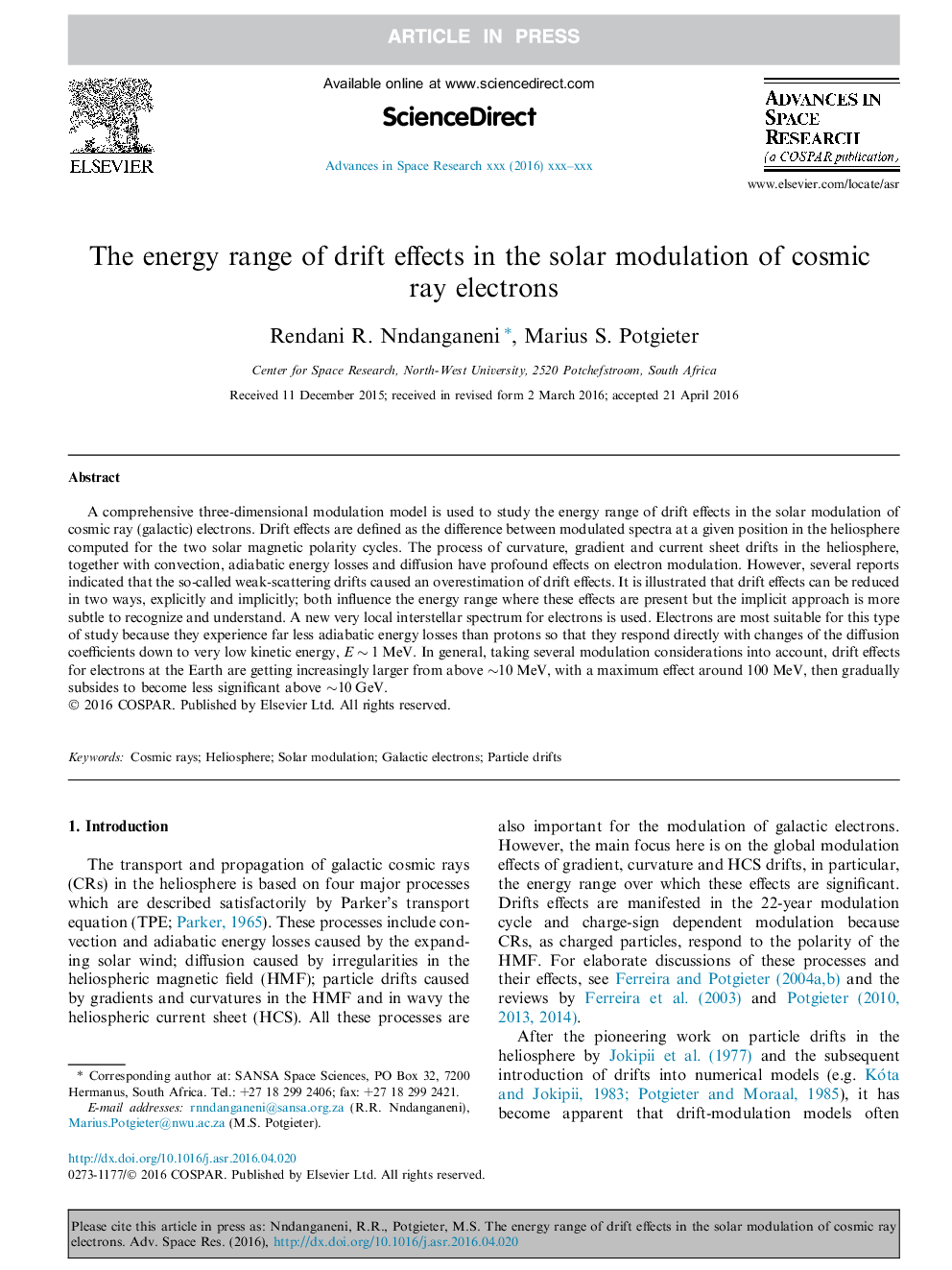| Article ID | Journal | Published Year | Pages | File Type |
|---|---|---|---|---|
| 10694107 | Advances in Space Research | 2016 | 11 Pages |
Abstract
A comprehensive three-dimensional modulation model is used to study the energy range of drift effects in the solar modulation of cosmic ray (galactic) electrons. Drift effects are defined as the difference between modulated spectra at a given position in the heliosphere computed for the two solar magnetic polarity cycles. The process of curvature, gradient and current sheet drifts in the heliosphere, together with convection, adiabatic energy losses and diffusion have profound effects on electron modulation. However, several reports indicated that the so-called weak-scattering drifts caused an overestimation of drift effects. It is illustrated that drift effects can be reduced in two ways, explicitly and implicitly; both influence the energy range where these effects are present but the implicit approach is more subtle to recognize and understand. A new very local interstellar spectrum for electrons is used. Electrons are most suitable for this type of study because they experience far less adiabatic energy losses than protons so that they respond directly with changes of the diffusion coefficients down to very low kinetic energy, E â¼Â 1 MeV. In general, taking several modulation considerations into account, drift effects for electrons at the Earth are getting increasingly larger from above â¼10 MeV, with a maximum effect around 100 MeV, then gradually subsides to become less significant above â¼10 GeV.
Related Topics
Physical Sciences and Engineering
Earth and Planetary Sciences
Space and Planetary Science
Authors
Rendani R. Nndanganeni, Marius S. Potgieter,
